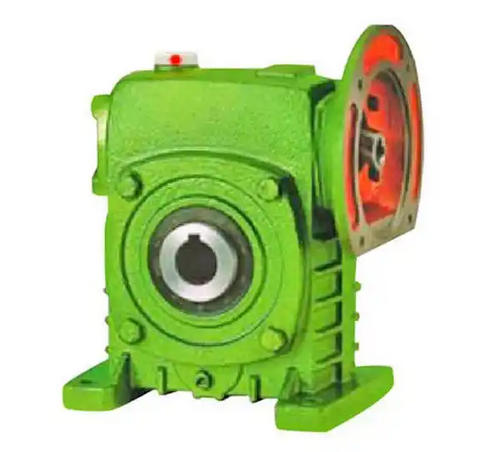How to prevent insufficient or contaminated lubricating oil in WPDKS135-50-A-4KW worm gear reducer
To prevent insufficient or contaminated lubricating oil in the WPDKS135-50-A-4KW worm gear reducer, a full process prevention mechanism should be established from three dimensions: "standardized lubrication management, strengthened pollution prevention and control, and regular monitoring and maintenance". Combined with the characteristics of "high sliding friction ratio and easy heat generation" in worm gear transmission (which relies more on lubricating oil quality than gear reducers), the following measures should be taken:1、 Standardize lubrication management: Control from the source of "oil selection, oil injection, and oil change"
1. Strictly select suitable oil products and eliminate mixing

Worm gear reducers require the use of specialized worm gear oil containing anti-wear agents and copper corrosion inhibitors (such as L-CKE/P 220 or 320, as specified in the manual) due to the fact that the worm gear is mostly made of copper alloy (sliding friction with steel worm gears). It is prohibited to use ordinary gear oil as a substitute (ordinary oil may not contain copper protective components, which can accelerate worm gear wear).
Before adding new oil, it is necessary to check whether the oil packaging is intact and within the shelf life, and avoid using oil that has been stored for a long time after opening (which is prone to water or impurities).
2. Accurately control the oil level to avoid "too much" or "too little"
Low oil level: unable to form an effective oil film, resulting in insufficient lubrication (especially in the meshing area between the worm spiral surface and the worm gear tooth surface, which is prone to oil shortage).
Excessive oil level: The stirring resistance increases, the oil temperature rises and accelerates the oxidation of the oil, which may also cause leakage of the seal due to excessive pressure.
Before refueling, stop the machine for 15 minutes (allowing the oil to flow back to the tank), observe through the oil level gauge or oil mirror, and ensure that the oil level is between the "highest" and "lowest" marks (usually 1/2-2/3 of the tank volume):
Regularly (once a week) check the oil level. If the oil level drops rapidly, immediately investigate whether there are any leakage points (such as the output shaft oil seal or the oil tank joint). It is forbidden to directly replenish the oil without addressing the leakage (which will mask the problem of seal failure).
3. Change the oil periodically and remove impurities during the running in period
First oil change: After running the new machine for 100-200 hours, all lubricating oil must be replaced to remove copper and iron shavings generated during the running in period of the worm gear (the worm gear is made of copper alloy, and wear debris can easily contaminate the oil).
Conventional oil change: Under normal operating conditions, change the oil every 3000-4000 hours (or 6 months, whichever comes first); If the environment is harsh (high dust, high humidity, continuous high load operation), shorten to 2000-2500 hours.
When changing the oil, it is necessary to thoroughly drain the old oil (remove the drain plug, tilt the equipment if necessary to allow residual oil to flow out), and flush the oil tank 1-2 times with new oil (the flushing amount is 1/10 of the tank volume) to avoid residual impurities in the old oil.

